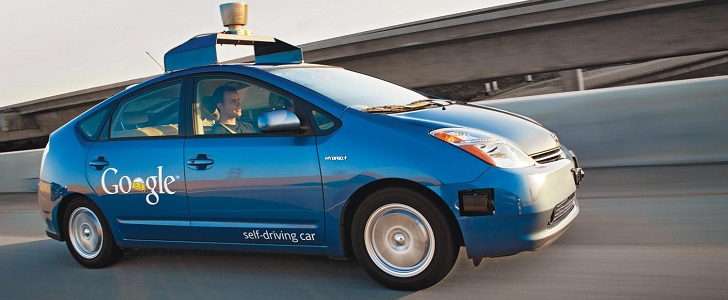Some of us would rather be able to get in a car and allow it to take us where we need to go without the hassle of having to actually drive the car. Much like the commute via bus, train, or subway some that have to drive to work would much rather be able to enjoy that time doing anything except having to pay attention to the road ahead. Imagine how much more relaxing it would be to arrive at your job having taken a short nap, enjoyed the morning news feeds, or simply read part of a good book rather than have to deal with other drivers on the road. The time for this is actually closer than you might think.
As a leader in technology, innovation, and of course the standard for search engines, Google has developed cars that actually do drive themselves. Riding atop these vehicles is a chandelier looking device that sends all the signals needed to the driving parts of the vehicle allowing it to drive a person to their destination. The technology contained is able to review road signs, traffic signals, and construction zones, apply laws of the road, and ensure the safety of the occupants of the vehicle. All these cars need is a destination input and by utilizing all the included driving technology as well as, of course, Google Maps, the car is able to take the occupants where they need to go.
Is this actually legal? As of right now, no it is not. Google itself is based in the Silicon Valley area in Northern California and California has not passed laws making it legal to operate these vehicles, called autonomous cars, but new legislation is on the horizon. As a Yuba City, CA used car dealer pointed out, while Google came out with this form of technology the California DMV had not officially addressed the use of these kinds of vehicles, mostly because they didn’t need to at all. Now that Google has autonomous vehicles the need to address this issue is present.
The good news for autonomous cars is as of September 16th of this year, there are new regulations that will take effect stating the requirements for testing autonomous cars in California. This will allow Google the ability to test and improve their cars and make them better and more easily user-friendly for public use. The next part of these changes is to allow the cars to be used for the public by January 1, 2015 with a full array of rules for use with proper regulations in place.
Strangely enough California would not be the first state to allow the use of autonomous vehicles. Nevada has previously approved the testing and even created a special license plate for these types of vehicles to be registered, tested and used on their roads. Currently, California will allow vehicles that are registered in other states to be tested on their roads, but manufacturers must apply for a permit from the state and all the vehicle information in order to be fully tested on the road.
Operators of autonomous vehicles do have to pass special driving tests and need to be prepared to take over control at any time in order to keep the vehicle where it needs to be on the road in case of any form of system failure.
The one car manufacturer who has so far been aggressive in pursuing the use of autonomous vehicles as been Audi, with Nissan and Continental and Tesla starting to enter the fray as well. As it stands now, Nissan has actually publicly promise to have self-driving cars on the road by 2020, at what cost to the consumer is still yet to be determined.
The ability to get in your car and head off to your job without having to control and drive the vehicle yourself seems to not be too far away at all. With several automakers starting to get involved in the development of autonomous cars, as well as Google’s already working models to build from, the complete availability is right around the corner.


Leave a Reply